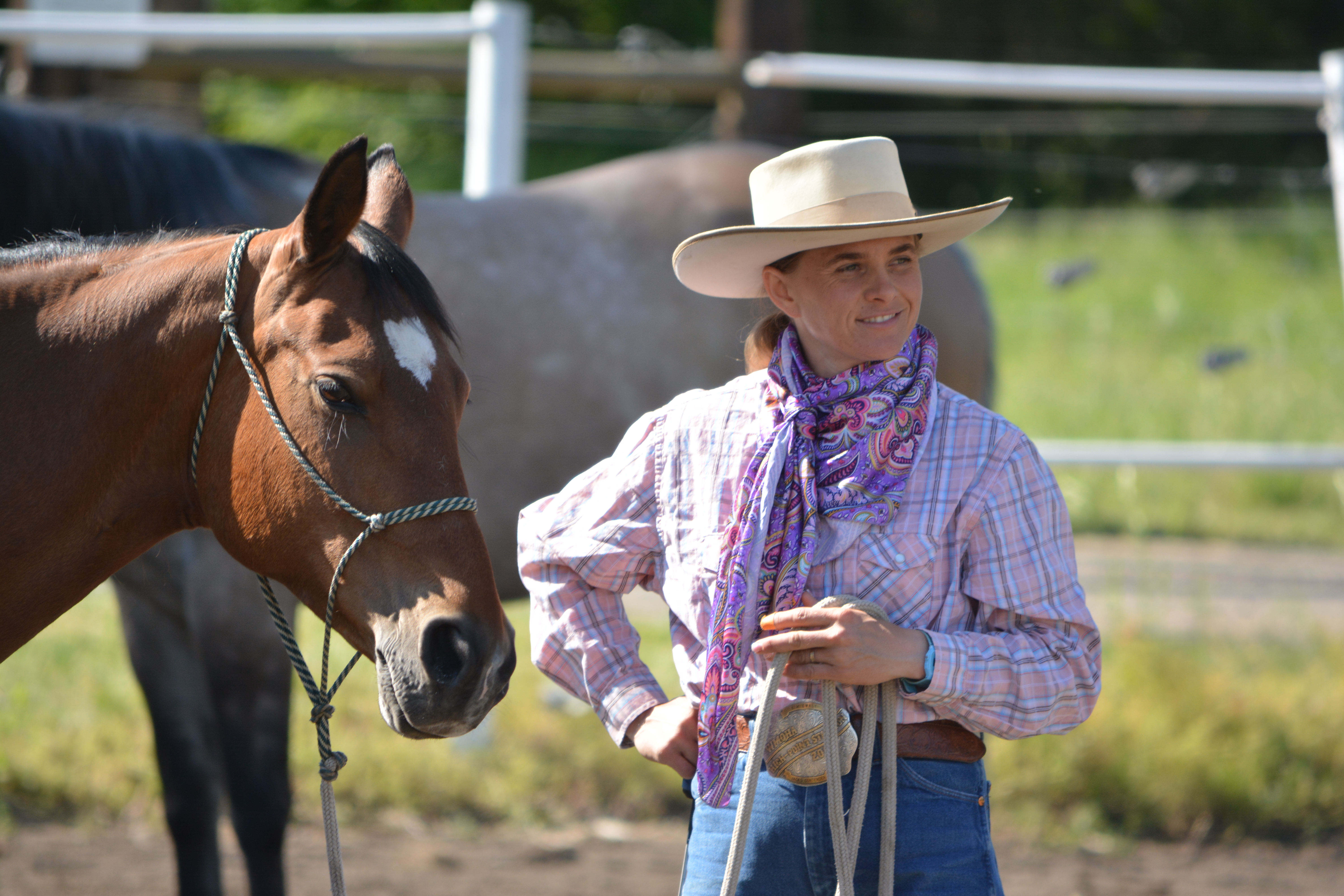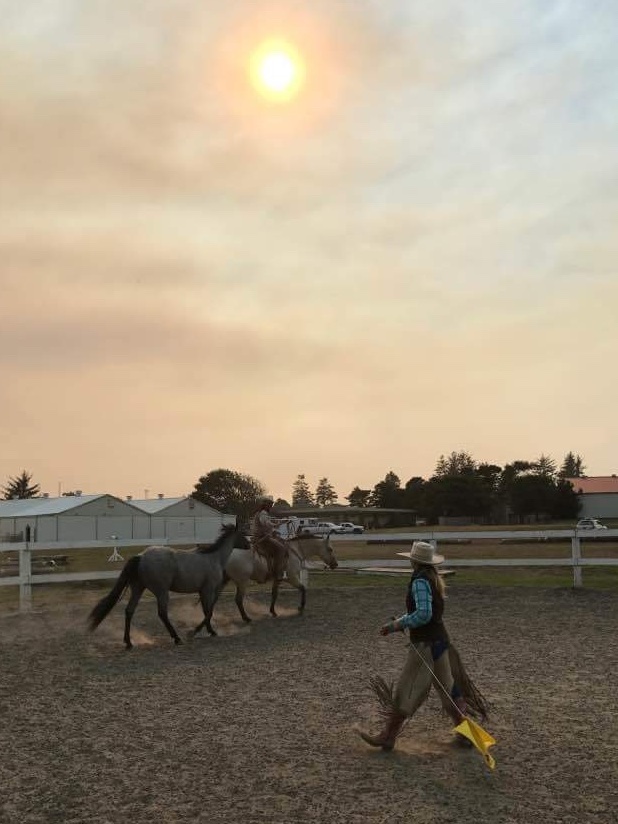Kim began training professionally at the age of sixteen. Her work with horses includes halter starting, colt starting, correction of problem horses, trail and obstacle training, and the training of the hackamore and bridle horse.
Some might call Kim’s style of training “natural horsemanship.” Kim prefers the term “classical horsemanship,” which encompasses a training philosophy that respects the horse’s physical and mental development as well as the goal of seeking harmony between horse and rider.
“One of my major goals in teaching and training is to help the horse have a happy life. I want to make it as good a deal for the horse as possible.”
KIM’S TRAINING PHILOSOPHY: FOWARD AND CALM
 Kim’s style of training involves encouraging a horse to think using a “feel and release” method of training. If a horse is thinking, he may try different responses to the “feel” the handler presents. By offering a release when the right answer is found, he learns to explore rather than react, making for a safer and happier horse.
Kim’s style of training involves encouraging a horse to think using a “feel and release” method of training. If a horse is thinking, he may try different responses to the “feel” the handler presents. By offering a release when the right answer is found, he learns to explore rather than react, making for a safer and happier horse.
A push-button or shut-down horse has limited options. He may give a desired response until he encounters a situation outside his comfort zone. If he hasn’t been taught to think things through, he will be more likely to become reactive, often in away dangerous to the rider.
By teaching the horse to seek the right answer without being punished for making mistakes, he learns to move from a flight or fight response to an attitude of exploration. This makes for a happier, more alive horse, capable of forming a true partnership with his rider.
“In other words, a horse is a lot less likely to buck you off. If at first you get in between the horse and the scary object, they’ll eventually get in between you and the scary object. They do that in the herd and they can do that for the person, if they’ve been allowed to think.”
For Kim, it’s not about being the “leader” of the horse.
“That concept gets talked about a lot, but in reality, very few horsemen can truly be a leader in the horses eyes. Respect is something a horse is taught, not forced into out of fear.”
Kim believes that what we should aim for is a partnership with the horse, with the human handler being a bit above in the relationship.
“We can’t be the leader, but they are going to do what we ask them to do if we give them the calmness they are seeking. It’s up to use to show them how to find that calm spot.”
THE TRAINING PROCESS

Kim starts out working a horse on the ground, where she can observe and evaluate how it’s moving and spot potential issues. “When evaluating a horse brought in for training, the horse tells me pretty quickly what the problem is.” The horse will determine the direction Kim takes in its training.
“My job when working with a horse is to try to help the horse become a productive citizen and to be able to handle whatever situation he or she encounters. I want to help the horse become comfortable in its own skin and to be able to accommodate the rider.”
A key component in the horse’s training is the owner’s involvement. “It’s absolutely necessary, it’s mandatory, that the person be involved. There’s a saying, when the training process is finished, that the training wears off on the trailer ride home. That happens because person isn’t fluent enough with what horse needs.”
Kim’s training methodology, and her insistence that the owner/rider remain involved in the training process, results in a more confident and close partnership with a greater chance for success when the training process is over. Her compassion for both horse and human stems from her love of horses, her desire to teach the horse to be a safe and willing partner, and ultimately, her commitment to giving each horse the happy life he or she deserves.